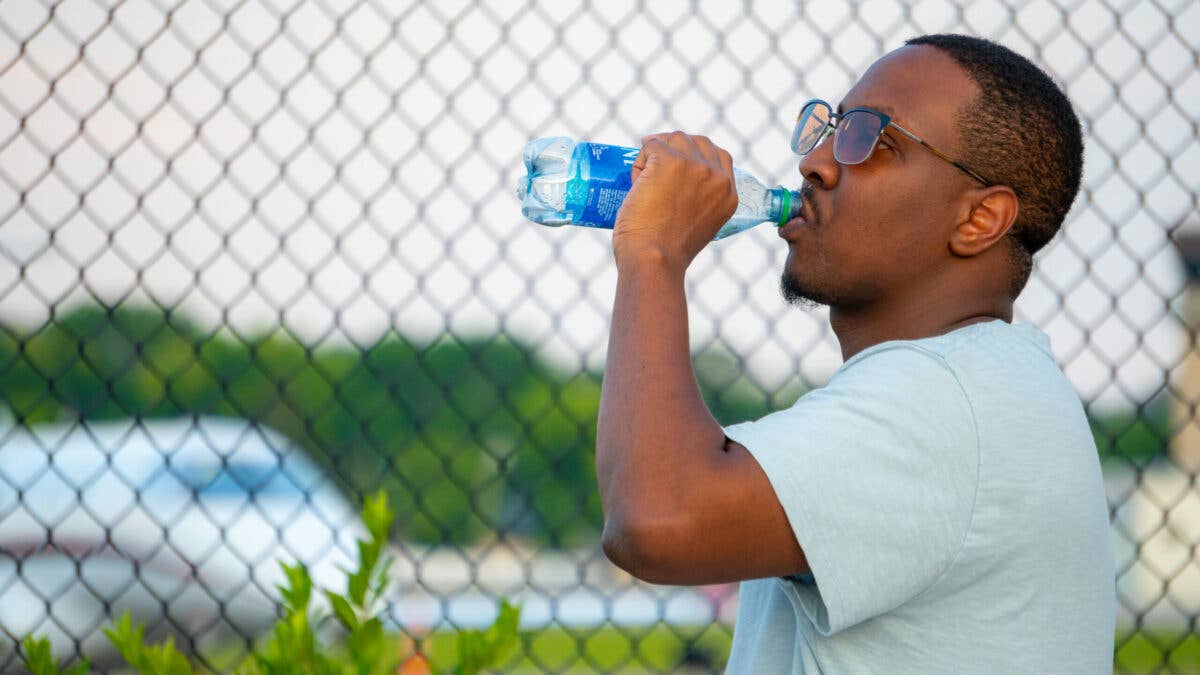
Strategies for successful summertime training include planning shorter trip legs, diversion airports, and keeping up with hydration. [Courtesy: Michael Wildes]
I remember saying to my student, "It's finally August, Kevin, we're almost there." I was upbeat about our training progress and beaming with optimism that we’d be able to meet our goal. Kevin and I met for the first time in June. We were paired together for his initial commercial pilot training course.
Doing my typical spiel, I told Kevin it was possible to earn his entire certificate before the end of summer. I would do my best to make it happen if he was up for the challenge, but I warned him: “This will be very demanding.” The fact that we had to complete the entire training course was the easy part—the Florida summertime heat and humidity would push us to our limits. “At least your training block is at 6 a.m. It’ll be cooler in the mornings, but we have to watch for the early morning fog followed by the cloud build-up,” I reasoned out loud insearch of some reprieve in light of our aggressive training agreement.
Fast forward—it’s now August. Kevin and I could see the end in sight. We needed just one more flight to complete a mock checkride. We’d put all the things we’d been working on together in an entire sequence, and I told Kevin that if we found anything deficient, we would fix it on the spot. This meant we went on a flight much longer than usual—for three hours this time—hoping we’d have the endurance to match.
On Saturday morning, when we set out to complete our flight, I had the first indication that maybe I was unflinchingly optimistic about getting things done amid typical fuel and traffic delays. That should’ve been my cue to adjust our plans. Still, to a fault, I was bent on getting Kevin’s course complete.
We made it through the first series of procedures fine, but as the day grew hotter, both Kevin’s and the airplane’s performance waned. The Cessna 172 in which we were training was no longer climbing sharply as Kevin tried to complete his lazy eights, so his technique was off. I also failed to adjust the performance standards, instead insisting that Kevin make another attempt to fix the procedure as we dodged the clouds building up around us.
As the student, Kevin’s optimism rode on mine, but as the flight went on longer and longer, his energy and focus began to deplete, despite his best efforts to push through. As an instructor, I should’ve anticipated this and understood that Kevin would’ve gone along with anything I said. In the end, it turned out to be an exhaustingly futile—if not altogether foolish—exercise, and Kevin and I later admitted that we were shortsighted about the demands of summer flying.
Ultimately, Kevin made it through. We’d figured out that it was wiser to split the flight sequence up, and that it was in our best interest to stick to a shorter time limit for each flight, even though we originally thought otherwise.
While I’ve had other memorable summer flights, this one has been most instructive to me. As you navigate the summertime, you’ll realize there are multiple challenges to address. Even on the best days, your airplane will be sluggish—longer takeoff and landing rolls; slower climbrates; and, worse, never enough ventilation.
Weatherwise, pilots have to contend with morning fog, thunderstorms, microbursts, high winds, clear air turbulence, and humidity. The worst scenarios might find you hoping that your airplane can withstand whatever nature has thrown at you.
However, those aren’t the only hazards. As I discovered in my flight with Kevin, pilots tend to think about summer performance only in terms of the airplane and the weather, but more is at play. Indeed, the effect the environment has on our bodies might pose a more significant threat than we tend to acknowledge. This could be costly.
The FAA has described the challenge pilots and their passengers face in the heat as “thermal stress.” With extreme heat as the stimulus, thermal stress is an important factor in fatigue, and it impairs performance. Occupants of low-flying, piston-powered airplanes are the ones who typically have to deal with airplanes that don’t have the best air-conditioning systems, and most onboard cooling systems are deficient on the ground and at low altitudes.
Pilots need to anticipate this to take care of themselves and their students and passengers, especially since everyone reacts differently. Some human needs aren’t immediately obvious until you’re in a bind. As I learned with Kevin, it can be costly to push a fellow pilot along or expect a student to comply with your demands.
Whether you’re going on a long cross-country trip or doing a training flight, it’s in your best interest to consider the potential impact of heat exposure. This means planning shorter trip legs, diversion airports, and enough hydration. As usual, dress for the environment, understanding that your body cools down when you sweat, which means breathable fabric might be more comfortable. Flying with another pilot will always be a hedge against your own limitations, allowing you to reduce your workload and potential stress. Ultimately, planning your trips earlier in the morning and later in the evening will reduce your heat exposure.
While it may seem that these external elements threaten a good experience in the airplane, pilots who take the time to plan accordingly for the demands of summertime flying can ensure instead that the memories end up being pleasant.

Sign-up for newsletters & special offers!
Get the latest FLYING stories & special offers delivered directly to your inbox






